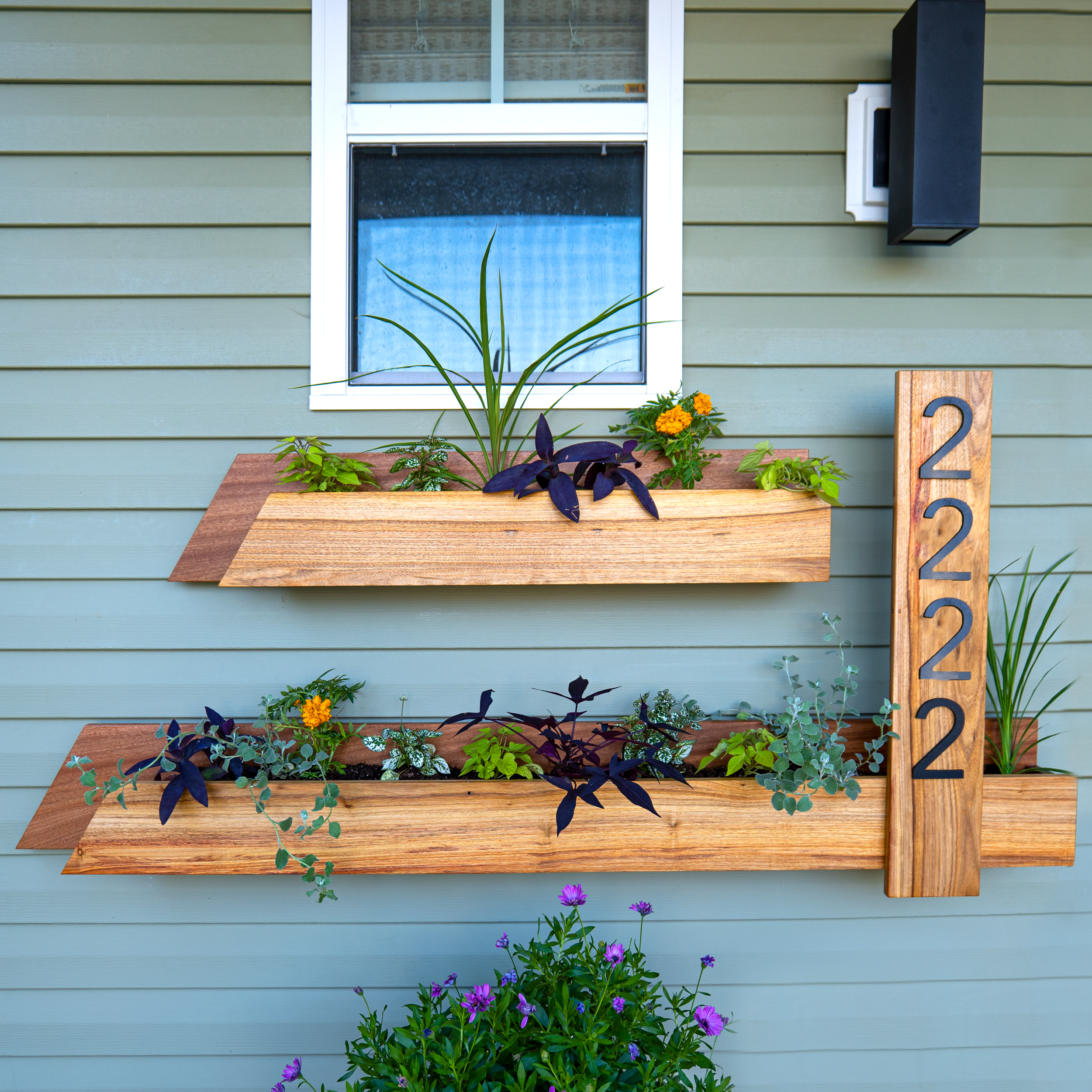Building Modern Planter Boxes for My Front Porch
We have lived in our house for almost ten years now, so it was time to give our front porch a much-needed upgrade - And what better way to start than with planters and the house numbers. Building planter boxes is a great way to add some curb appeal to your home. And not only do these look amazing, but they can also be used to hold plants or other decorations. I made these from sapele and canarywood which contrast really well and will hold up to the elements. Plus the canarywood is a nice complement to our front door. I used stopped double rabbets and stopped dados for the joinery so its definitely built to last. The upper planter box also has an inconspicuous hiding spot for those who lock yourself out of the house (you know who you are). And for those who are concerned, those are not my actually house numbers..😉
If you're interested in building these planter boxes make sure you watch the full build video and get the plans here.
The Best Wood to Use for Outdoor Furniture
First, you'll need to decide on the material. You'll need to choose durable wood that can withstand outdoor elements like rain, snow, sun, and humidity. Cedar or teak are great options that are used in a lot of outdoor furniture and decor. Cedar is a popular choice for outdoor projects because it's naturally rot-resistant. This means that it will last for years without rotting or decaying. Teak is another great choice for planter boxes because it’s one of the most durable woods on the market and it has a beautiful natural color. I have also used cypress for my outdoor chaise lounge and it has held up quite well!
But for this project, I went exotic with canarywood and sapele.
Canarywood is a beautiful and unique wood with some very expressive grain. It's important to note that this wood is not quite as durable as some of the other options I mention above; however, it's still a good choice for these planter boxes because it's rot resistant. If you choose to use canarywood, be sure to seal it with a waterproof sealant or oil. And for my purposes, these planter boxes will live underneath a covered porch, which will limit the amount of outdoor exposure it receives.
Sapele is another great option for planter boxes. This wood is very durable and rot resistant. It's also has beautiful straight grain that will add some visual interest to the planter box and contrast nicely against the canarywood.
Using Rabbets to Join the Planter Box Sides
For this project, I wanted to use stopped rabbets to join the sides and bottom of the planter boxes. Rabbets are a great way to join two pieces of wood together because this type of joint is very strong and can withstand a lot of weight. These types of joints are much stronger than a simple butt joint, so these boxes are built to last.
Choosing the Right Finish for Outdoor Projects
When it comes to finishing your planter box, you want to choose a finish that will protect the wood from the elements. To finish these planter boxes, I wanted to use something that would maintain the natural look of the wood while also protecting it. I went with Osmo UV Protection Oil because it is water and dirt resistant, moisture regulating and reduces wood swelling and shrinkage. The natural oils also enhance the natural character and tone of the wood.
Another option for planter boxes is teak oil. This finish will help to protect the wood from rot and decay. It's also a great option if you want to give the planter boxes a natural look.
Modern Hide-A-Key Solution
One cool feature I included was a space to hide a key on the smaller planter. This whole idea came about after I had locked myself out of the house, but of course, with the way that the internet goes, I will need to come up with another solution for myself!
Don’t forget to check out the full video for the project and let me know if you have any questions about the build!





